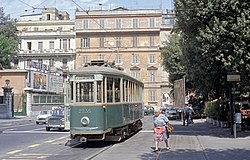 View of the square (1970) | |
 | |
| Location | Rome, Italy |
|---|---|
| Postal code | 00185 |
| Coordinates | 41°54′16″N12°30′09″E / 41.904377°N 12.502469°E |
| Major junctions | Via Solferino & Via San Martino della Battaglia |
| Construction | |
| Construction start | 1872 |
Piazza dell'Indipendenza (Independence Square) in Rome is a square in Municipio V (the 5th municipality) of the Castro Pretorio district of the Italian capital city. It is situated between Via Solferino and Via San Martino della Battaglia.